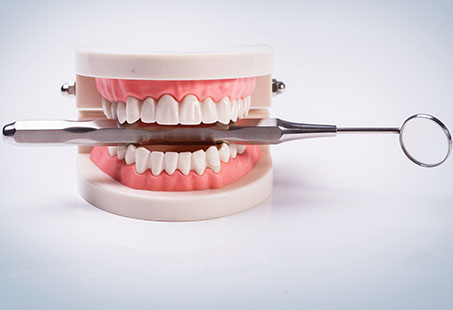Teeth are at the front and centre of your face. Any anomaly in their shape, colour, or size doesn’t pass without notice. Unfortunately, jagged teeth are one such anomaly.
Now, when you think of “jagged teeth,” you don’t have to remind yourself of that girl from the Hunger Games. These serrations can be more subtle, but they are an aesthetic problem nonetheless. Sometimes, however, they can be serious. And if left untreated, the jaggedness of the teeth can end up damaging the internal layers of the tooth.
What Are Jagged Teeth?
You are naturally born with jagged teeth. Your primary and permanent teeth have bumps or protuberances on the biting end. These are known as mamelons and they can make, your teeth look jagged. But you’ll notice that the edges of these bumps are rounded; they aren’t sharp or harmful.
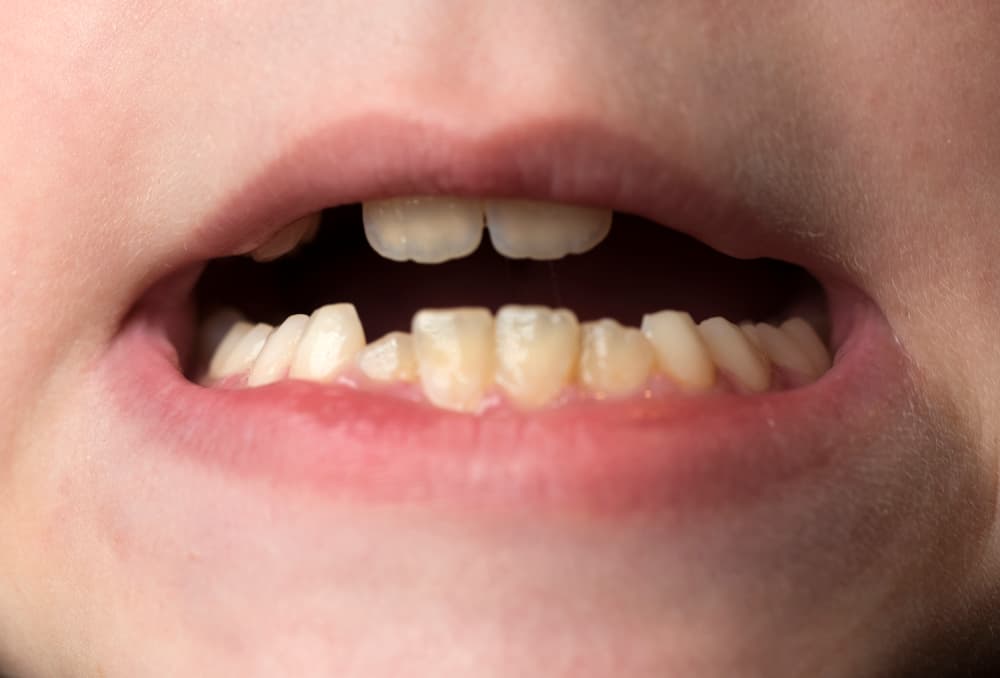
Mamelons almost resemble the serrations on a blunt knife. And their very purpose is to cut. This means that mamelons exist so that when your teeth are erupting, these bumps can help cut through the gum tissue. You can be seen on the central and lateral incisors of the upper and lower jaws. Normally, there are 3 bumps per tooth. However, you already know that mamelons don’t stay with you forever.
According to a study published in the Arab Journal of Forensic Sciences & Forensic Medicine, these bumps are significantly diminished by the age of 25, regardless of gender. This happens because of the wearing down of the teeth. The irregular surface is eventually smoothed (the process starts in a matter of months) out as a result of your teeth rubbing against each other.
Keep in mind that having jagged teeth is normal, but this “jaggedness” shouldn’t persist as that may be indicative of a problem with your bite. For as long as you have them in your growing years, you don’t need to worry about mamelons causing any functional issues (in biting or chewing foods).
When Are Jagged Teeth Not Normal?
Having jagged teeth is not always normal or natural. As mentioned above, they should go away as you grow older, but that’s not the case for everyone. It can be because of the following reasons:
Malocclusion (Bad Bite)
What helps mamelons on the teeth go away is the rubbing of the teeth against each other. That might not happen if your teeth aren’t aligning properly. This is known as malocclusion or a bad bite. This results in the retention of the jaggedness into the later years of life.
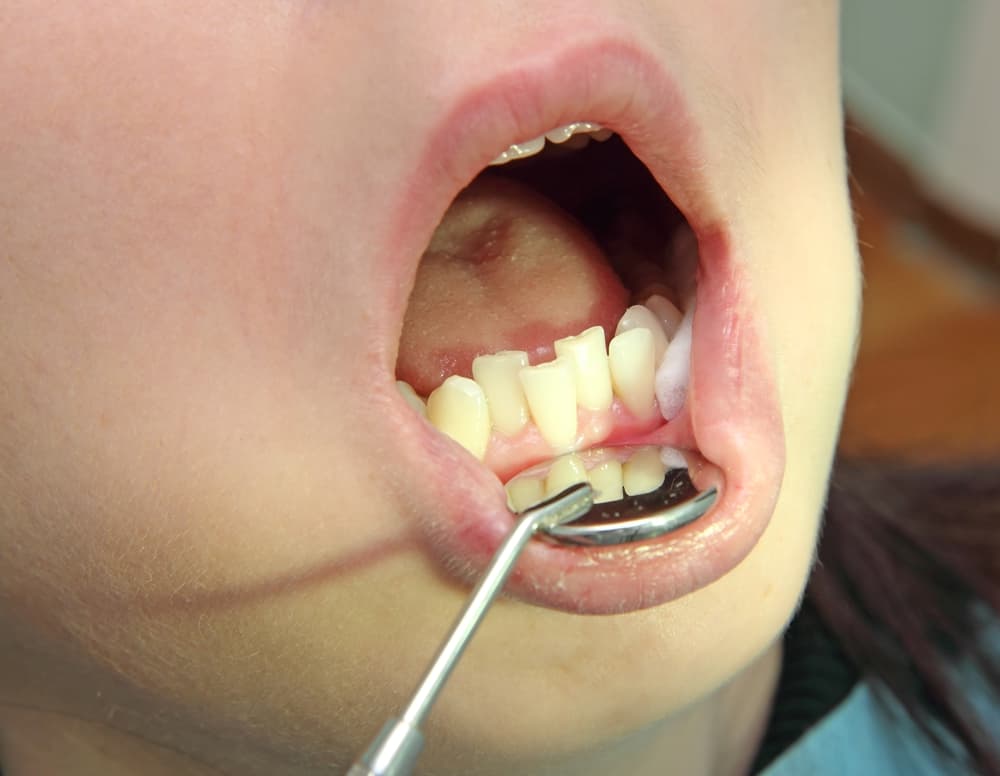
For instance, in an open bite, the teeth in the upper and lower jaws do not overlap with each other, which leaves an “opening” or space in the centre. This kind of malocclusion can exist because of the structure of the underlying bone, the small size of the teeth, TMJ, or damaging oral habits (like sucking the thumb).
In any case, since the teeth do not meet each other, they can end up looking jagged. In fact, mamelons are most common in an open bite occlusion. However, the same can happen if you have a deep bite, underbite, crossbite or crooked teeth.
Poor Oral Health
Jagged teeth can also be blamed on poor oral health. The bacteria on your teeth will release acids that will eventually eat away at your teeth, leaving holes or cavities. If the tooth continues to decay, it will eventually crumble or break.
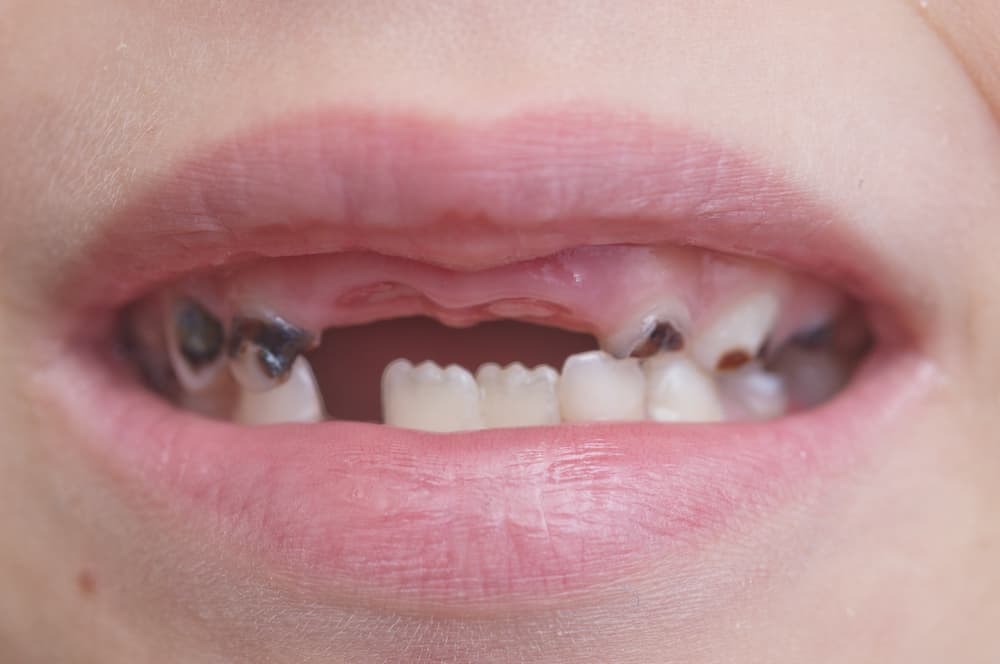
The surface of the remaining tooth structure can become jagged with sharp edges. Also, having large, old fillings means that your existing tooth structure is weak. So, even with fillings, you can end up breaking your tooth, leaving it jagged. That’s why you need to prevent cavities in the first place.
Trauma
Dental trauma due to an accident or injury can give you significantly jagged teeth (pointy teeth). If you lose a significant portion of your tooth, it can even expose the underlying nerves.
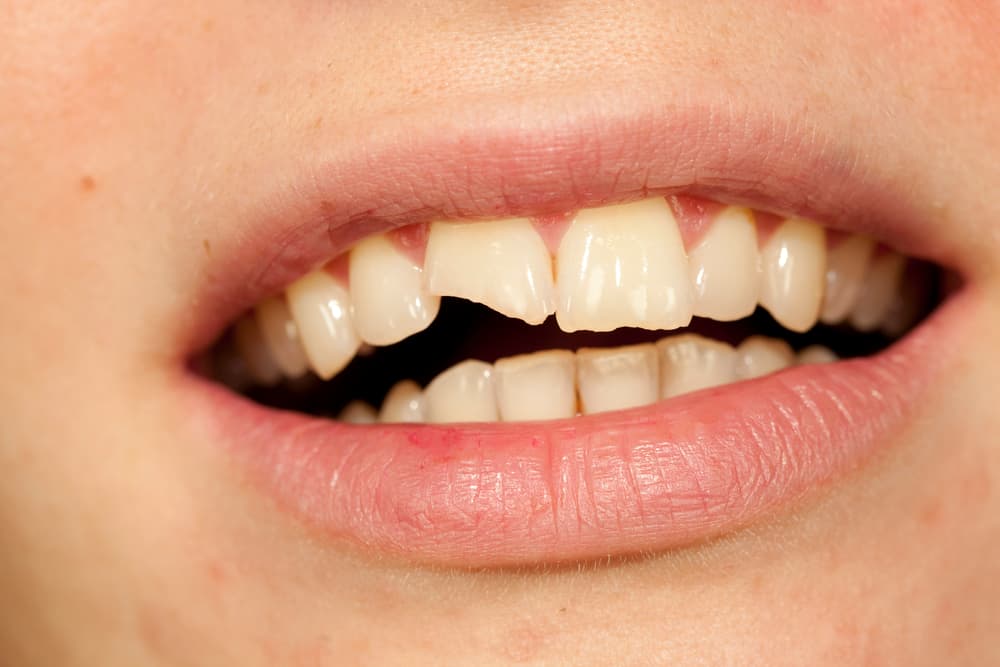
Your tooth may feel sensitive. There’s even a risk of infection. In this case, you’re advised to visit your dentist immediately. You may need a root canal before the tooth is restored with a filling or crown.
How To Fix Jagged Teeth?
The treatment for jagged teeth can depend on the severity of your problem. It may be one or more of the following, though:
Contouring
Using a sandpaper disk, drill or laser, the dentist can contour the biting end of the teeth. Some part of the enamel is rubbed or polished away so that the tooth surface becomes even. The procedure is fairly quick and doesn’t cause any pain so there’s no need for an anaesthetic. But keep in mind that once the the treatment is done, the enamel won’t “grow back.” Your results will be permanent. Therefore, make sure to find a good board-certified dentist.
Composite Bonding
If your teeth are only slightly jagged, you can consider getting a dental bonding. In this, the dentist will mould a composite resin putty over the surface of your teeth. Only the jagged parts will be covered but the colour of the resin wouldn’t stand out because it matches the colour of the original teeth.
Veneer
If your teeth are moderately jagged but there’s enough tooth structure to salvage the situation, your dentist may recommend dental veneers. These are wafer-thin, tooth-coloured shells usually made of porcelain. The dentist will remove some enamel from the tooth before cementing the veneer over it.
Extraction & Implants
If the tooth is badly shattered and cannot be saved, the dentist will have to extract it entirely. In this case, restoration is only possible through artificial teeth and you may need an implant for that. A titanium screw will be anchored by your jawbone and a crown will be placed on top of it.
Jaw Surgery
Problems with your bite can be a result of problems with your underlying tooth structure. An orthognathic or jaw surgery can readjust the position of your jaw so that your teeth meet each other properly. This can help the jagged edges wear down with time.
Orthodontic Treatment
If you have jagged teeth due to a bad bite, it’s a good idea to consider orthodontic treatment. Braces are most commonly used. They will exert constant pressure on your teeth to change their position. Once your teeth are aligned, the dentist may follow up with contouring to give you the best results.
Is It Safe To Fix Jagged Teeth At Home?
You should never shave or file your teeth at home yourself because it can cause permanent damage. Nail filers in hand, you’d have seen many TikTokers filing their teeth, and fixing jaggedness at home. There are many problems with that. For one, nail filers are not equivalent to sterilised drills or disks used in a dentist’s office. There are bacteria on it, which poses a risk of infection.
Not just that, but there’s also the potential of harming the different dental tissues. And keep in mind that once you’ve damaged them, there’s no coming back. Your enamel or dentin cannot regrow, so what you do will stay with you for the rest of your life. And lastly, if you try and file your teeth at home, there’s also the risk of cracking them. That, too, is permanent. So, it’s not safe to fix jagged teeth at home. If you have a problem, you should consult a dentist.
How To Prevent Jagged Teeth?
As mentioned above, teeth are naturally jagged, but that goes away with time so you don’t need to seek treatment for it. However, some people end up with jagged teeth later in life due to poor oral health or trauma. In such instances, it’s possible to prevent your teeth from becoming jagged in the first place. For that, you should do the following:
- Brush twice using fluoride toothpaste, floss, and use a mouthwash.
- Do not use your teeth like tools (for opening bottles, packages or cracking nuts).
- Wear a night guard if you have bruxism or you play contact sports.
These measures will not only protect your teeth from jaggedness but improve your overall oral health.
Concluding Remarks
Many people have a problem with the jagged edges of their teeth. You’re born with these serrations so your teeth can cut through the gum tissue and erupt. However, normally, they shouldn’t stay with you above the age of 25. The reason behind it is that as your teeth rub against each other, these bumps smooth out. But these can persist in people who have a problem with their bite.
It’s also possible to acquire jaggedness later in life due to cavities and an injury or accident. If that’s the problem, make sure to get in touch with a dentist. Left untreated, such teeth can damage the internal tissue of your tooth. It can also worsen your overall oral health.
